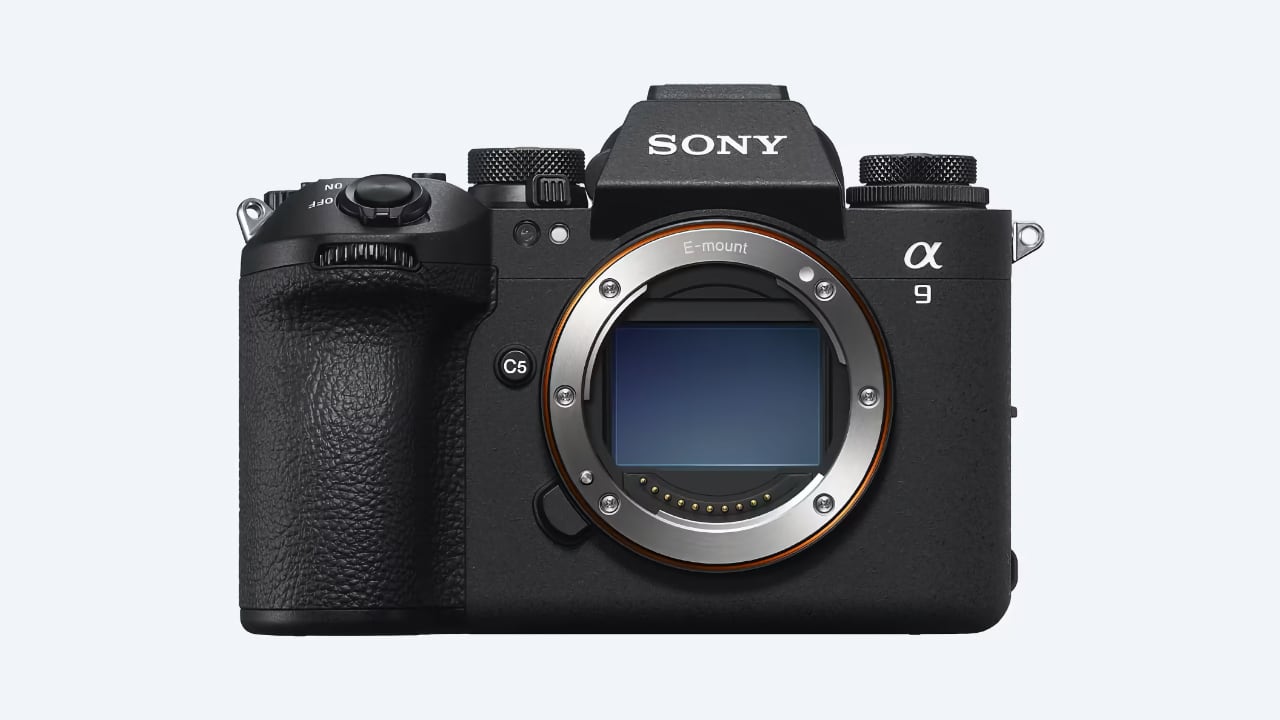
Sony’s next generation Alpha 9 III features up to 120 frames second high-speed shooting, distortion-free and blackout-free images, flash sync at all shooting speeds, and more.
Lots to talk about with the new Sony Alpha 9 III. Headline though is easily the new global shutter full-frame 24.6MP image sensor. This enables the camera to shoot at burst speeds at up to 120 fps with no distortion or camera blackout. By combining this innovative sensor with Sony’s most advanced AF system to date - boasting AI autofocus with up to 120 times AF/AE focus calculations per second - as well as the ability to sync flash at all shooting speeds, even up to the camera's max of 1/80,000th of a second, the α9 III opens up a lot of new possibilities.
Price for all that potential? $5999 when it launches in January next year.
Let's deal with the video first.
Video features
This camera is the first in the Alpha series to be able to record 4K 120p high-frame-rate video without cropping, allowing the user to shoot at the angle of view intended. It is also possible to shoot high-resolution 4K60p videos with 6K oversampling.
The α9 III features S-Cinetone, created through the development of the VENICE digital cinema camera for video production. It is also equipped with the latest video performance including rich gradation performance and S-Log3. When in Log shooting mode, it can reflect and display the user's favourite imported LUT. The α9 III is compatible with the mobile app "Monitor & Control" for video creators.
Users can record 10-bit 4:2:2 internally using All-I encoding for maximum quality and output 16-bit raw via the full-size HDMI port to a compatible external recorder.
Here's a quick summary of the specs:
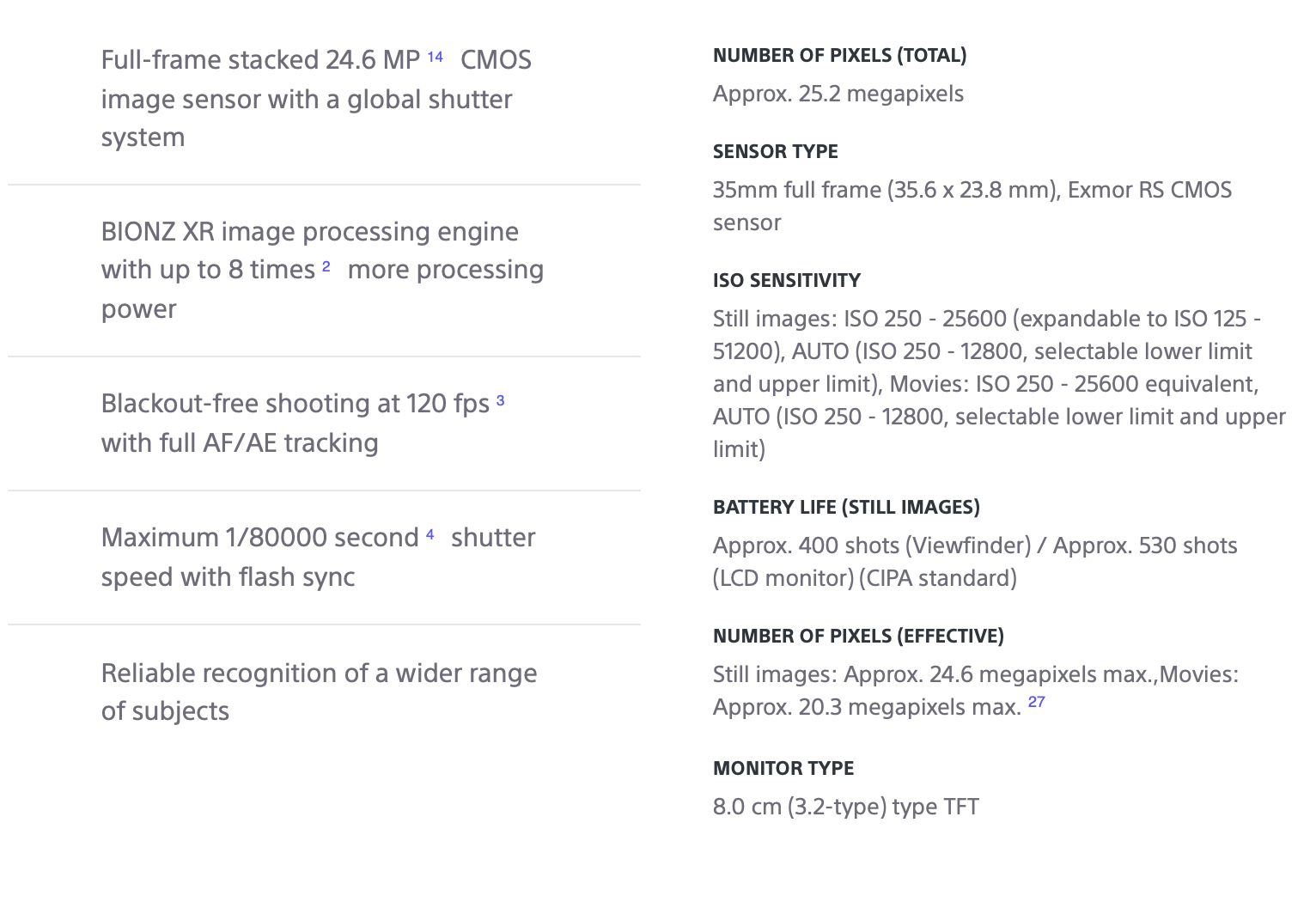
AI processing & shutter speeds
Sony says that the AI processing unit in the α9 III supports movies as well as stills with accurate subject form and movement recognition, providing a significant improvement in human eye recognition performance with Real-time Recognition AF and Real-time Tracking automatically recognising, tracking, and focusing on the eyes of a specified subject. The α9 III is equipped with 8.0 stops of optical 5-axis in-body image stabilization, allowing for high-quality image rendering.
The global shutter means that shutter speed is freed from the limitations of conventional mechanical shutter image sensors and achieves a maximum shutter speed of 1/80000 second (1/16000 second during continuous shooting), making it possible to capture at high speed without any distortion. When a compatible Sony flash is attached, that makes it possible to synchronize the flash and take pictures at all shutter speeds up to 1/80000 second. Previously, if the user released the shutter at a speed faster than the flash's synchronization speed, the amount of light would drop sharply, but with the full-speed flash synchronisation function, it’s now possible to photograph scenes that could not be easily captured with conventional technology.
Also, when shooting stills or movies under LED lighting, the Hi Frequency Flicker function can significantly reduce high-frequency flicker problems by allowing the shutter speed to be finely adjusted to match the flicker frequency while viewing the monitor.
Pre-capture and burst
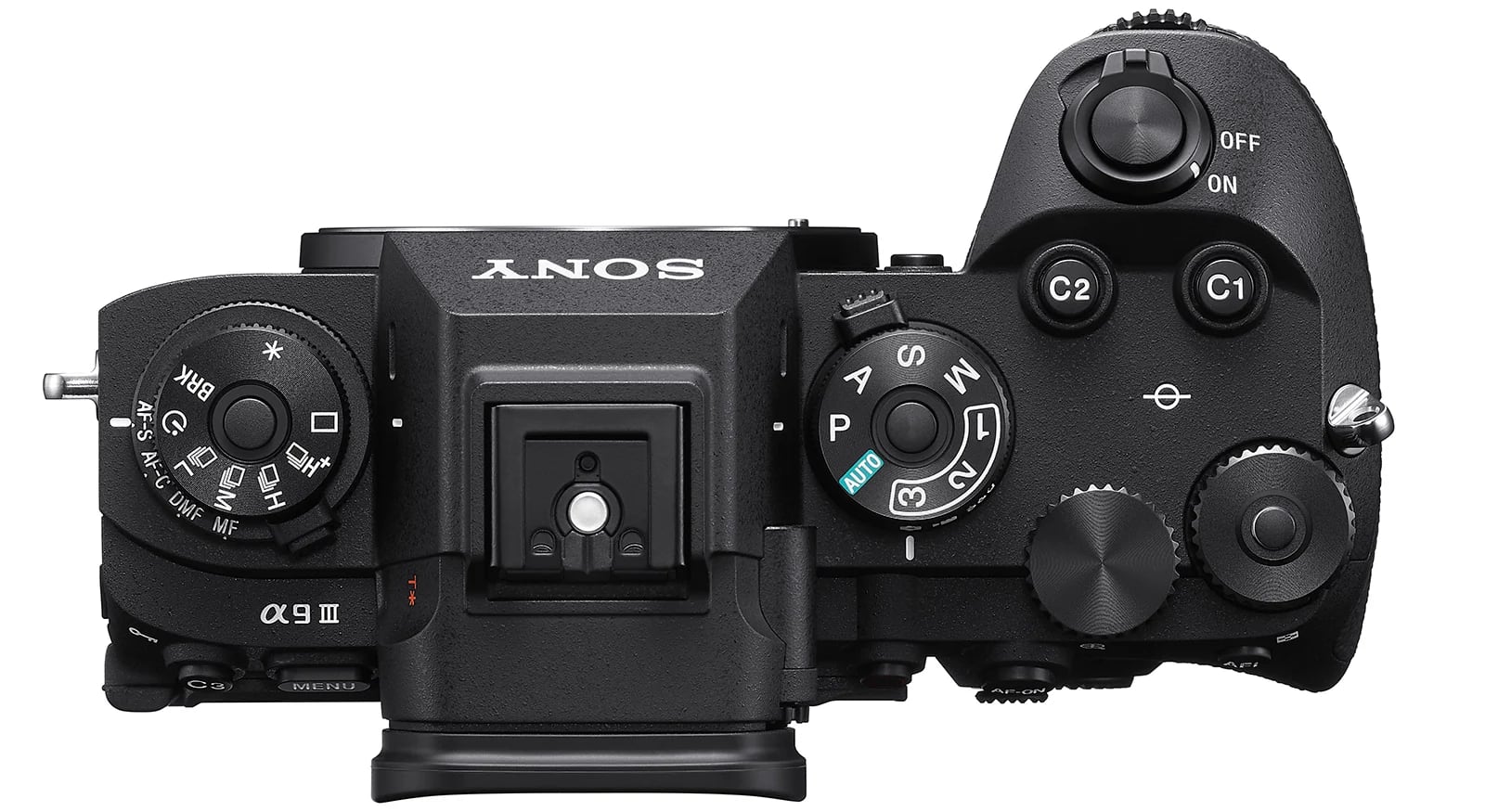
The α9 III features selectable release lag modes, which allow the user to prioritise release lag or viewfinder/monitor display. The newly installed Pre-Capture function allows the user to go back up to 1 second and record the moment before pressing the shutter. A Continuous Shooting Speed Boost change during shooting and enhanced burst stamina ensures that important moments are captured thanks to a large buffer memory and increased overall system speed. This allows up to approximately 390 Fine JPEG images to be captured in one continuous 30 fps burst.
Customisable focus areas have been expanded to include from XS to XL instead of the previous S,M, and L sizes. The Preset Focus/Zoom function allows preset focus and zoom settings to be memorized in the camera for quick recall when needed. In addition to the existing custom white balance frame size, the user can now select other sizes as needed, which allows for fine white balance adjustment after an image has been composed. The α9 III has upgraded features such as the latest AF algorithms to achieve high AF precision down to light levels as low as EV-5 in AF-S mode (ISO 100 equivalent, F2.0 lens), AF tracking for continuous shooting at F22, and a composite RAW shooting function that gives the ability to combine multiple consecutive images into a high-quality composite.
Ergonomics
The shape of the grip has been improved over previous generations and ergonomically designed so that it can be easily held in the palm of the user’s hand to avoid strain even when using a telephoto lens or over long periods of time.
The VG-C5 vertical grip (sold separately), offers the same operability and versatility when shooting horizontally, providing comfortable support for long shooting sessions. The grip and shutter button area share the same design as the main camera body, allowing image capture without feeling uncomfortable, with the same operability as the camera. The α9 III is equipped with a 4-axis multi-angle LCD monitor that can be operated by touch, allowing for intuitive operation using the latest touch menu. The electronic viewfinder uses a 9.44 million-dot Quad XGA OLED and achieves high visibility with the same brightness as the α7R V and a magnification of approximately 0.90x. A custom button is placed on the front of the camera, and the continuous shooting speed can be changed by operating the custom button assigned with Continuous Shooting Speed Boost with the finger holding the grip, allowing for highly immediate operation.
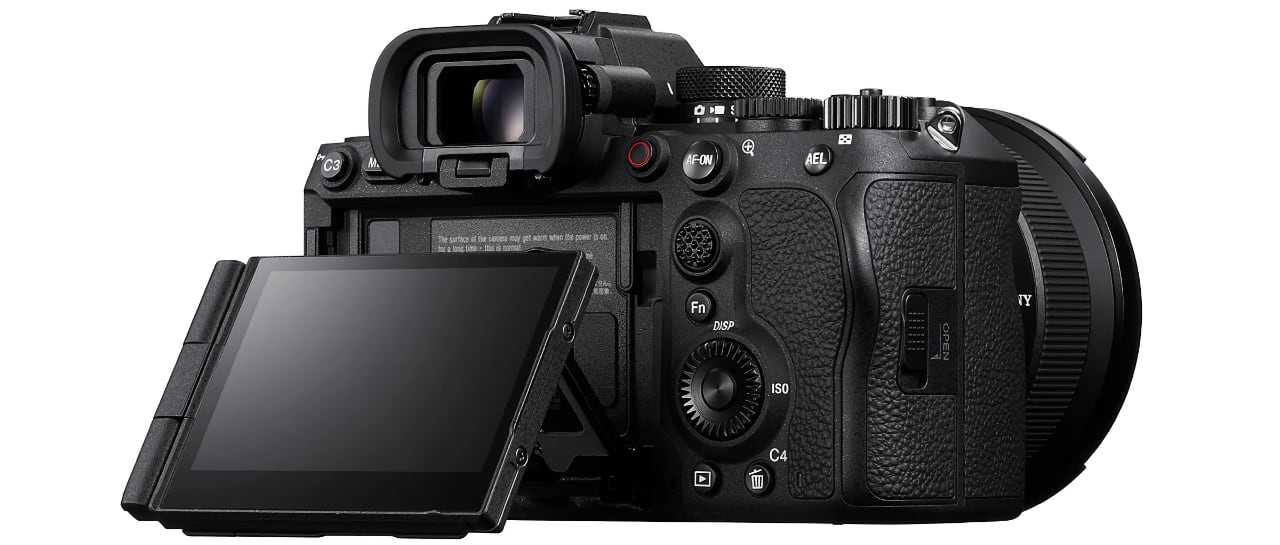
Workflow improvements
New features for the α9 III include a playback image filter that allows the user to efficiently select a large number of images using high-speed continuous shooting and a function menu that can be used even during image playback.
A function menu can now be used during playback so the user can efficiently select a huge number of images using high-speed continuous shooting. The "Playback Function Menu" can be assigned in advance so the user can perform protection, smartphone transfer, FTP transfer, etc. during image playback. The user can also select images narrowed down with a playback filter and play them from the function menu, allowing for quick delivery of specific images.
Audio? The camera is equipped with a dedicated microphone for voice memos on the back, and the built-in microphone located near the mouth allows clear recording of audio even in noisy environments. The recorded audio data can be transferred via FTP along with the images.
The α9 III can transfer data up to twice as fast as the α9 II. 5 GHz communication offers maximum speed and stability for news and sports shooters who need to deliver immediately via FTP, as well as for studio environments. The α9 III allows stills and movies to be recorded to memory media in numerous ways including the two media slots that support CFexpress Type A cards as well as UHS-I and UHS-II SD cards.
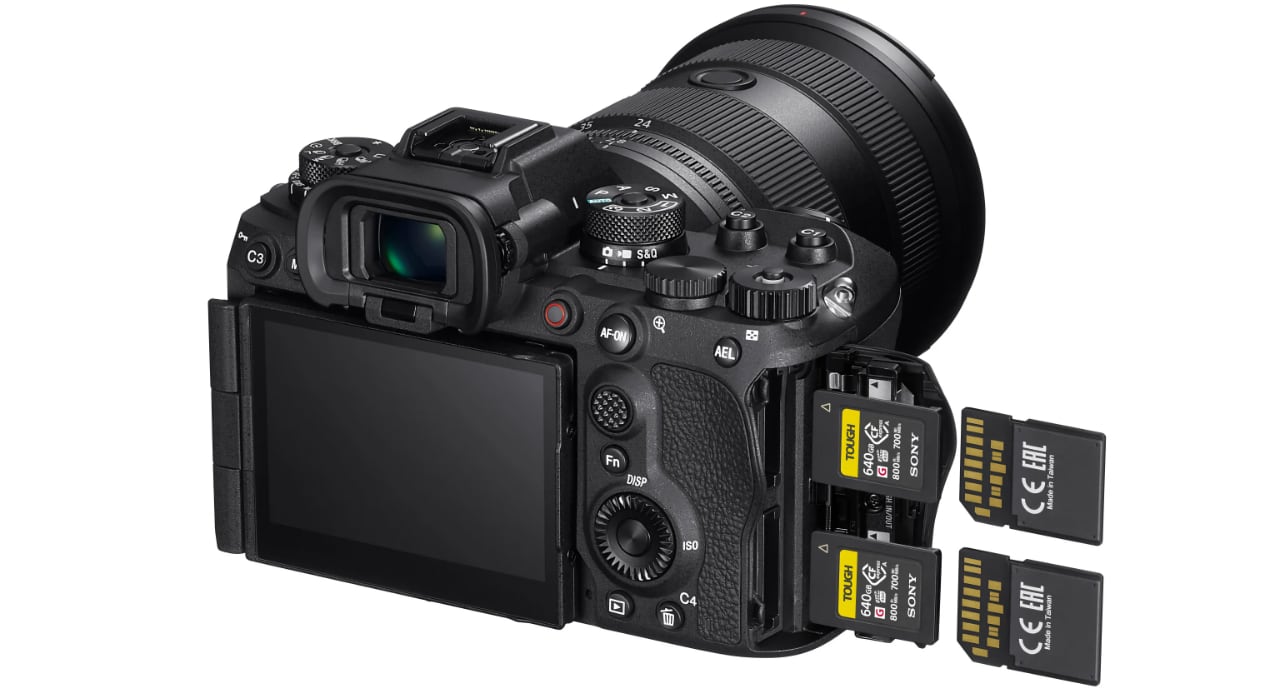
It is compatible with the professional mobile application "Transfer & Tagging" which speeds up the image delivery workflow, and the application "Remote Camera Tool" which allows remote shooting of PCs using wired LAN. Sony is also planning to support a new version of Camera Remote SDK, a software development kit that allows remote camera operation and changing shooting settings.
In addition, the α9 III is scheduled to support functional enhancements such as FTP operability, relay playback, and C2PAxv format support through a camera software update by Spring 2024.
Sony also says it will continue to expand functions such as breathing correction, relay playback, and C2PA format support for the α1 and α7S III in the future to meet the needs of professionals along with the α9 III.
Tags: Production Cameras


Comments